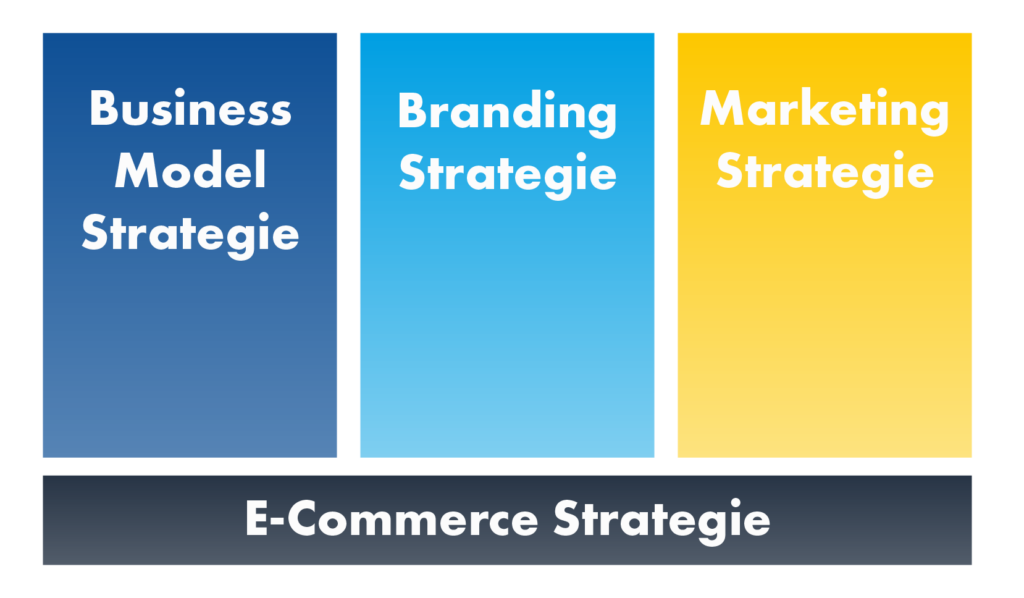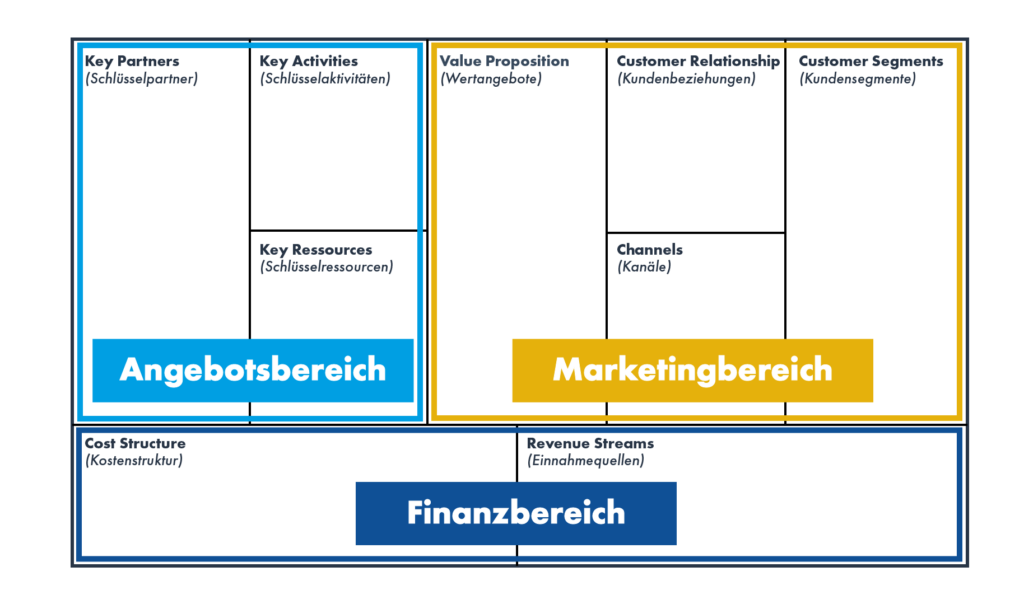E-commerce strategies, part 1: Business model strategies - How to become a successful online retailer
Share this article
Tags
Categories

There is no doubt about it: e-commerce is booming, both worldwide and in Germany. In the B2C sector, the pandemic has reinforced the trend of increasing add-on rates that has been prevalent for years. But in B2B, too, corporate customers are becoming younger and more digital. According to a Study by ibi research online orders have already overtaken traditional written orders in 2020: 40 percent online orders compared to 38 percent traditional orders.
If you don't take advantage of this growing trend, you'll miss out on potential customers and therefore a lot of revenue. But how do you go about developing your own e-commerce strategy? In this and the following blog posts, you will learn more about e-commerce strategies that you should know and apply if you want to be successful in the online market.
The elements of an e-commerce strategy
A successful and comprehensive e-commerce strategy consists of three parts:

One of the most important parts of e-commerce business is to define a strong and flexible business model. It should be able to scale up or down as needed, and it should be sustainable and adaptable in the long term.
Once you have defined the business model, the next step is to develop the branding of your company. What is the story of your company? What are its values? How do you want customers to perceive your brand? Once you have answered these questions and can communicate your product and branding consistently, you need a clearly defined marketing strategy.
Branding and Marketing strategy are the topics of the next two blog posts in this series; this article is dedicated to the elements of a business model strategy in e-commerce.
Business model strategies for B2B e-commerce
Developed and published by Strategyzer, the Business Model Canvas is a strategic management tool with which you can easily design, scrutinize and describe your business model.
It consists of nine building blocks, which can be divided into three different areas:
- Offer area
- Marketing area
- Financial area

A customer segment is a group of customers who have similar needs, desires or behaviors. While it is more common for B2C companies to segment their customers based on demographic and psychographic criteria, B2B customer personas are defined by their job title, company size, industry or jobs-to-be-done. There are four types of B2B customer segmentation:
- Firmographic segmentation
- Needs-oriented segmentation
- Behavior-based segmentation
- Tiering or profitability-based segmentation
Value proposition
A value proposition is a statement that defines the unique benefits that your products or services offer your customers. It should be clear, concise and easy to understand. It should also be something that is important to your target customers: the value proposition must be tailored to the needs and goals of the customer segment.
Strategyzer has created a specific canvas for the Customer Segments and Value Proposition areas, which Value Proposition Canvaswhich makes it easy to define both areas and relate them to each other.
Customer Relationship
To ensure the survival and success of a business, the type of relationship you want to build with your customer segments must be identified here. This block should define three critical steps of a customer relationship: How can your business attract new customers, how can it get them to buy or use its services, and how can your business increase revenue with its existing customers?
There are three types of customer relationships in e-commerce: transactional, relational and cooperative.
- In transactional e-commerce, customers buy a product or service as a one-off action. The company then no longer interacts with them unless they make another purchase.
- In relational e-commerce, customers are invited by the company to enter into a relationship with them after making a purchase or using a service. This enables the e-commerce business to offer additional services or products.
- Collaborative e-commerce takes customer relationships one step further: the company not only interacts with customers, it actively helps them to find what they are looking for and make a purchase beforehand. This type of e-commerce is widely used in social networks - known as social commerce.
Channels
In terms of channel choice, there are three different types of B2B e-commerce strategies: direct, indirect and assisted.
- Direct e-commerce means that a company sells its products or services via its own website. This type of e-commerce strategy is beneficial because it allows your business to control the entire customer experience from start to finish. However, this also means that your company must have the necessary resources to handle all aspects of e-commerce, including order fulfillment and customer service. The most commonly used platforms for B2B e-commerce are Shopify Plus, Magento and BigCommerce Enterprise.
- Indirect e-commerce means that your business uses a third-party e-commerce platform to sell its products or services. This type of e-commerce strategy can be beneficial because it allows your business to focus on its core business and leave the sales process to a third party. However, it will also be more costly than direct e-commerce, as the platform will usually charge you some kind of commission on sales. Examples of this are Amazon Marketplace, eBay or, especially in Germany, Real.de.
- Assisted e-commerce is when your company uses a combination of direct and indirect e-commerce strategies. The combined benefits are offset by the increased complexity of having to coordinate different sales channels.
Which e-commerce channel strategy is right for your company? That depends on your individual needs and possibilities. You should consider the following factors when making your decision:
- Your company's ability to manage all aspects of e-commerce itself.
- The cost of using a third-party e-commerce platform.
- The question of whether or not you want to control the entire customer experience.
The product range
The offer area of the Business Model Canvas consists of three blocks: the partners, the most important activities and the required resources. If you understand these three blocks of the offer area, you can better recognize and evaluate the opportunities and challenges of your e-commerce business.
Key Partners
Your e-commerce company needs to find the right partners and work with them to be successful. These can be logistics providers, suppliers, payment gateways or marketing agencies.
Key Activities
The key activities of your business are one of the foundations of your success. These are all the activities that your company carries out to generate profit. These include operations, marketing, production, problem solving and administration.
One of the most important aspects of e-commerce is product development. This includes creating a product, defining the features and benefits it should offer and designing the packaging. It must also be tailored to the target market and marketed using a suitable pricing strategy.
A marketing plan is also essential to reach the target market and generate sales. This includes developing a brand strategy, running targeted advertising campaigns and building relationships with key partners.
Key resources
To be successful, you also need access to the right resources. These include facilities, buildings and equipment, financial resources, personnel or technological resources - in other words, the most important inputs and assets that your company needs to operate effectively.
The financial sector
The financial section of the business model canvas consists of two blocks: the revenue sources and the cost structure.
Revenue streams (sources of income)
There are a number of ways to generate revenue in e-commerce. The most common methods are
- Online sale of products or services
- Charging fees for access to premium content or features
- Affiliate marketing
- Receipt of payments from other companies for the referral of clients
It's important to identify the different revenue streams available and select the ones that are most profitable for your e-commerce business. You also need to analyze how much revenue each revenue stream generates and track this over time. This information can help you decide which revenue streams you should focus on.
Cost Structure
It's important to identify and track all costs as part of your e-commerce analysis so that you can accurately assess the financial health of your business. You also need to look for ways to keep these costs as low as possible in order to maximize profits.
There are a whole range of costs to consider when setting up an e-commerce business, including:
- Costs for product development
- Marketing and advertising costs
- Costs for website design and development
- Cost of goods sold (COGS)
- Shipping and handling charges
Conclusion: The e-commerce strategy is never really complete
Once you have defined your e-commerce strategy with the help of the Business Model Canvas, you can tackle the next steps: branding your company and the Marketing strategy.
And don't forget: all of these building blocks need to be constantly revised, adapted and optimized. A successful company must be flexible in order to be able to adapt to changing internal or external circumstances. There is only one thing to do: keep at it and optimize!
Further contributions
No contributions found.
